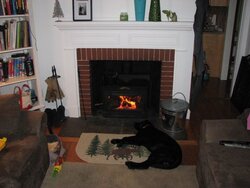Does it make a difference?
I have been using smaller splits to get the stove up to temp. Once up to temp, (500+F) the stove burns large or small splits while maintainging a good stovetop temp, .
I read that EPA stove prefer smaller splits? Any reason why?
I have been using smaller splits to get the stove up to temp. Once up to temp, (500+F) the stove burns large or small splits while maintainging a good stovetop temp, .
I read that EPA stove prefer smaller splits? Any reason why?


